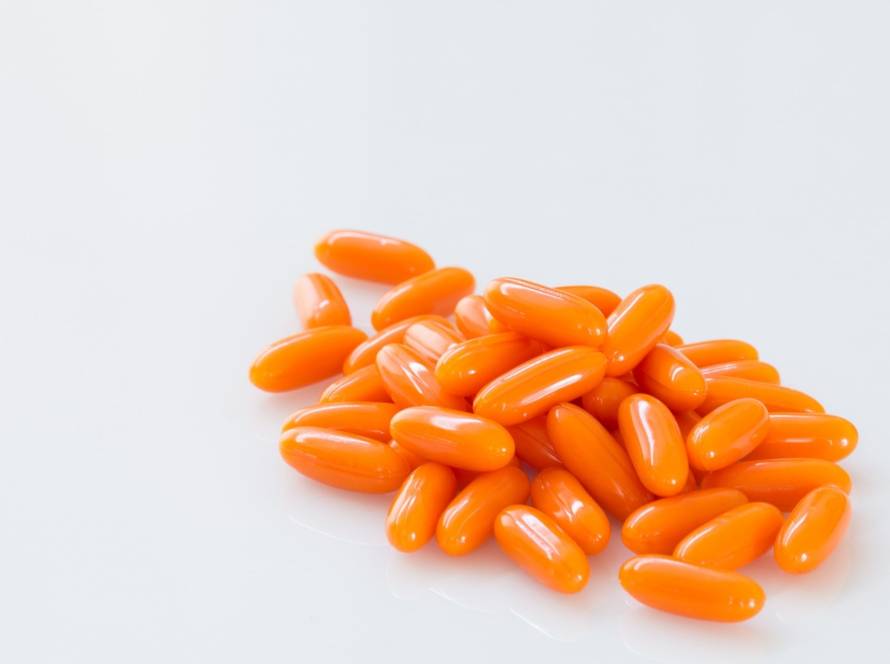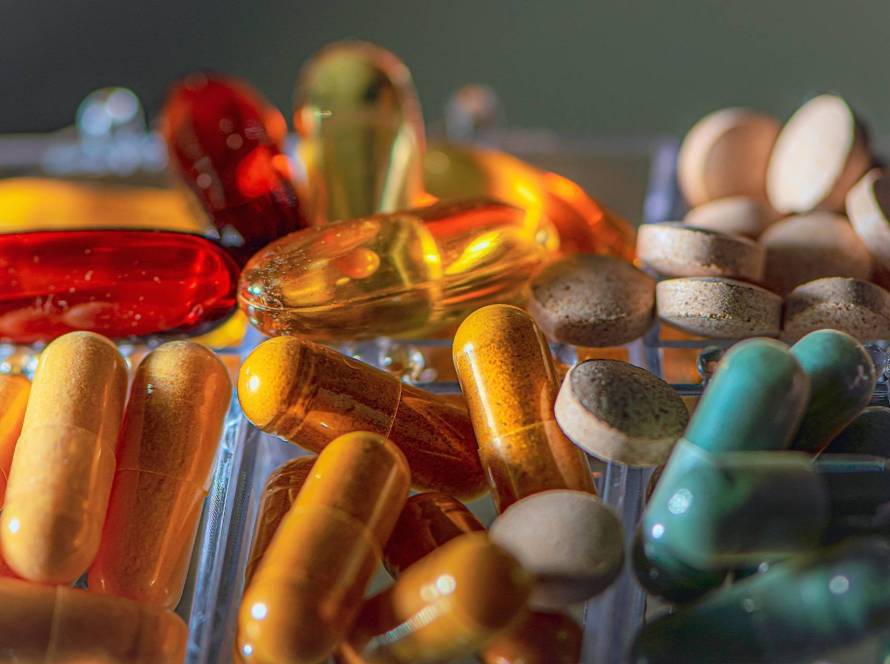Quercetin is a flavonoid that is found in many foods and herbs. This piece aims to learn about quercetin’s relationship with liver health and what research reveals about its effects, answering the question “is quercetin hard on the liver?“. We’ll break down its metabolism, safety profile and promising therapeutic uses based on recent scientific studies.
Does quercetin damage the liver?
Quercetin is not hard on the liver when taken in moderate doses. It’s generally well tolerated and may even support liver health, though caution is needed at high doses or in people with liver conditions.
How quercetin is processed by the liver
The liver works as a central hub that processes quercetin, a flavonoid that goes through complex metabolism before it can work in our body. This processing helps us understand why quercetin doesn’t behave the same way in our bodies as it does in lab studies.
Quercetin metabolism and liver enzymes
Quercetin moves into our bloodstream through intestinal absorption and travels via the portal vein to the liver where it changes substantially. We rarely find quercetin floating around in its original form. The liver’s sophisticated detoxification system transforms it completely.
Our liver processes quercetin in two main phases. During phase I metabolism, quercetin goes through oxidation, reduction and hydrolysis reactions that make it more reactive and ready for further processing. Cytochrome P450 enzymes (CYPs) handle this phase, but it doesn’t affect quercetin metabolism as much as phase II does.
Quercetin can affect these liver enzymes too. Studies show it blocks several CYP enzymes competitive inhibitor of several CYP enzymes (CYP2C19, CYP3A4 and CYP2D6) in human liver microsomes. This explains why quercetin boosts the effectiveness of certain medications like pioglitazone, an antidiabetic drug that CYP3A4 breaks down.
Role of glucuronidation and sulfation
Phase II metabolism is the quickest way the liver processes quercetin through three key reactions: glucuronidation, sulfation and methylation. These processes turn quercetin into water-soluble compounds that the body can eliminate easily.
UGT1As and other UDP-glucuronosyltransferases (UGTs) aid glucuronidation to create glucuronide conjugates. These conjugates are the most common forms of quercetin in our blood. Phenol sulfotransferases (SULTs) add sulfate groups to quercetin at the 3′-OH position. The liver also uses catechol-O-methyltransferases (COMT) to methylate quercetin at either the 3′-OH or 4′-OH positions.
Glucuronidation and sulfation work differently based on quercetin’s structure. Both processes prefer the 7-OH position of flavonoids. Glucuronidation likes the 3-OH position while sulfation prefers the 4′-OH position. These changes affect how well quercetin works, as these modified forms usually don’t work as well as the original compound.
How the liver clears quercetin from the body
Quercetin conjugates leave the liver through several routes. Special transporters like multidrug resistance-associated protein 2 (MRP2) on hepatocytes’ canalicular membrane help the liver release many quercetin metabolites into bile. These conjugates end up in feces, with about 35% of quercetin metabolites showing up in bile.
Other quercetin metabolites enter our bloodstream and leave through our kidneys. The amount of quercetin in urine goes up based on how much we take and how long it’s been since we consumed it.
Is quercetin toxic to the liver? What studies show
A deep dive into scientific literature shows that worries about quercetin harming the liver lack solid evidence. Research backs up this flavonoid’s safety record at normal supplement doses.
No evidence of liver damage in human trials
Clinical trials support quercetin’s liver safety record. A randomized, double-blind, placebo-controlled crossover trial with NAFLD patients who took 500 mg quercetin daily for 12 weeks found zero adverse events. A different study with 43 renal transplant patients spotted just one case where liver function tests went up briefly. This happened when quercetin (20 mg) was combined with curcumin. Human studies keep showing quercetin’s gentle safety profile.
Animal studies on high-dose quercetin
Lab research tells a more complex story about very high quercetin doses. One mouse study that looked at doses between 500-2000 mg/kg found that higher doses raised liver toxicity markers like AST, ALT, ALP and LDH. The flip side shows quercetin actually shields liver tissue. It cut down liver fat in NAFLD models and protected against acrylamide’s liver-damaging effects through several pathways.
Review of liver injury registries and case reports
Quercetin barely shows up in liver injury tracking systems. UNOS tracked about 50,000 liver transplants between 1990-2002, with none linked to quercetin. A Spanish network logged 570 cases of drug-induced liver injury, but quercetin wasn’t blamed once. The US collected 300 cases of drug-induced liver disease from 2004-2008. While herbs caused 9% of these cases, quercetin wasn’t named as a culprit.
When quercetin might be risky for liver health
Quercetin shows a good safety profile overall, but some situations need extra care. Let’s look at specific scenarios that might affect liver health.
Very high doses and long-term use
Quercetin works well for most people, but we lack enough data about its safety at high doses or with extended use. Scientists haven’t fully documented the safety of high supplemental quercetin doses (1000 mg or greater) beyond 12 weeks. Quercetin’s effects change based on its concentration. Lower doses help as an antioxidant and antiapoptotic agent. Higher amounts might act as a prooxidant and create oxidative stress in cells.
Pre-existing liver conditions
Animal studies point to several key factors, though direct evidence about quercetin’s effects on damaged livers remains sparse. Research suggests quercetin could boost nephrotoxic effects in already damaged kidneys. Some studies raise concerns about tumor development risks, especially when we have estrogen-dependent cancers.
Interactions with liver-metabolized medications
The biggest problem comes from quercetin’s impact on drug metabolism. This compound changes how fast our liver processes many medications. It works through cytochrome P450 enzymes, including CYP2C8, CYP2C9, CYP2D6 and CYP3A4. Quercetin also acts as:
- A moderate inhibitor of UGT1A1 and UGT1A3 enzymes;
- A strong inhibitor of UGT1A9.
These interactions can change how well medications work and their side effects. Some medications known to interact with quercetin include cyclosporine (increased effects), quetiapine (increased effects), losartan (altered metabolism), pravastatin (decreased elimination) and midazolam (reduced effects).
These interactions could lead to important clinical outcomes, especially with medications that need precise dosing.
Can quercetin actually help the liver?
Research shows quercetin actually protects the liver, contrary to common concerns about harm. This flavonoid supports and improves liver function in many ways through several different mechanisms.
Anti-inflammatory and antioxidant effects
Quercetin’s powerful anti-inflammatory properties are great for liver health. Studies show it suppresses inflammatory cytokines like IL-1β and IL-6 while boosting anti-inflammatory IL-10 levels. The flavonoid blocks NF-κB signaling and STAT3 phosphorylation, which are crucial pathways in liver inflammation.
The liver’s antioxidant defenses get stronger with quercetin. Research shows it boosts superoxide dismutase (SOD) and glutathione peroxidase (GSH-Px) activities and reduces malondialdehyde (MDA), which indicates oxidative damage. These changes help shield liver cells from injury caused by oxidative stress.
Protection against liver fibrosis in animal models
Lab studies have documented quercetin’s ability to fight fibrosis well. It stops hepatic stellate cell (HSC) activation, which leads to liver fibrosis. Tests show quercetin reduces fibrogenic markers such as Collagen α3(I) and Collagen α4(I).
Quercetin prevents too much extracellular matrix from forming by controlling TGF-β1/Smads and PI3K/Akt signaling pathways. This leads to lower levels of hydroxyproline, a collagen component that rises during fibrosis.
Potential benefits in fatty liver and alcohol-related damage
Quercetin shows promise as a treatment for non-alcoholic fatty liver disease (NAFLD). It helps reduce fat buildup by improving fat metabolism and triggering autophagy. Treatment with quercetin leads to more CPT-1a, which controls fatty acid oxidation.
The compound also protects against alcohol-related liver damage in several ways. Studies show it reduces serum markers of liver injury like AST, ALT total bilirubin in animals exposed to alcohol. Quercetin keeps mitochondria working properly and maintains membrane health while reducing damaged mitochondria buildup.
Use in Traditional Chinese Medicine (TCM)
Traditional Chinese Medicine often uses quercetin in liver treatments. Xihuang Pills, a classic TCM remedy with quercetin-rich herbs like Boswellia carterii Birdwood, work against liver cancer. Scientists have identified quercetin as the main ingredient behind these effects.
TCM doctors use herbs containing quercetin to treat various liver problems because they know it helps control liver metabolism and reduces inflammation. Modern research now backs up this traditional knowledge about quercetin’s liver-protecting properties.
Scientific evidence strongly backs quercetin’s safety and its positive effects on liver health, despite worries about potential liver toxicity. This flavonoid has showed protective properties for the liver across many clinical trials and lab studies. It also helps reduce inflammation, curb oxidative stress and stop fibrosis from developing in liver tissue.


